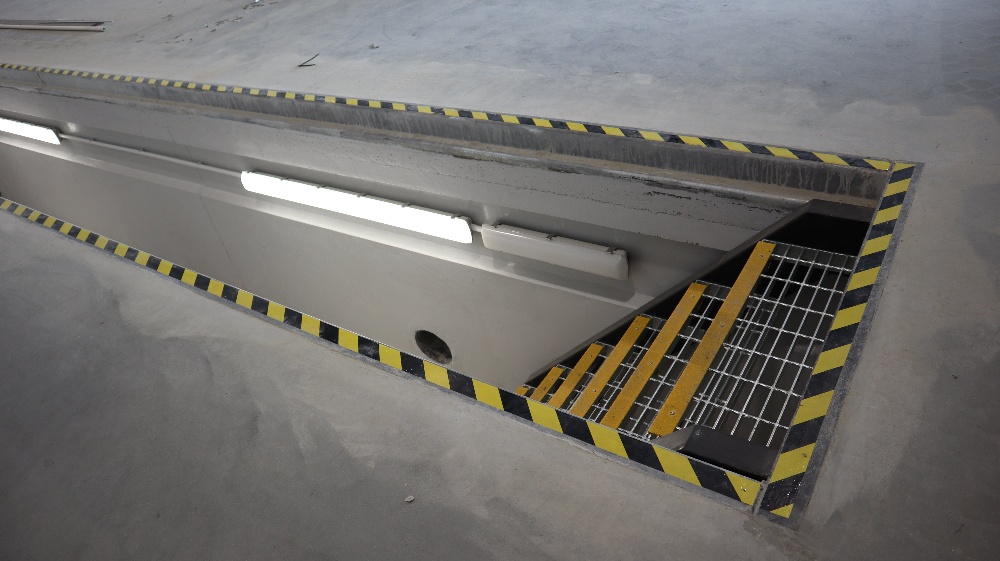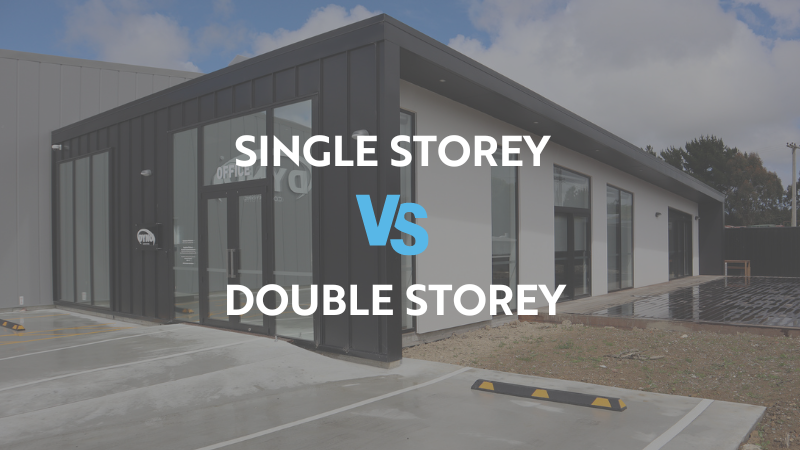What must I consider when putting a service pit in my new workshop building?
.png?width=800&height=450&name=XL%20%20Blog%20images%20(1).png)
Are you considering installing a service pit in your workshop? From safety and logistical concerns, to cost implications - there are plenty of things to think about before you decide on the right kind of service pit for you and your workplace.
In this article, we’ll go over the pros and cons of service pits as well as the key things you need to think about before equipping your workshop with one.
Is a service pit right for me?
Whether you are looking to install a service pit or decide whether a hoist will suffice instead, both options come with their own advantages and considerations, catering to different business needs and preferences.
Service pits
Pros of service pits
- Efficiency: Service pits offer a faster and more efficient workflow, allowing vehicles to drive in and out easily.
- Fail-safe operation: Service pits are considered more fail-safe than hoists, particularly when it comes to ensuring proper jack placement and safety.
- Lower maintenance: With fewer moving parts compared to hoists, service pits generally require less maintenance.
- Space optimization: Internal building height can be lower when using service pits, making them suitable for areas with height restrictions.
- Easy access: Pits provide easy access to wheels and tyres.
- Fitted out: Service pits can be fitted out with fluid lines and equipment, eliminating the need to drag equipment over the main floor, and making the workplace safer.
Cons of service pits
- Long-term investment: Installing a service pit requires significant upfront costs and construction work.
- Groundwater management: Dealing with groundwater can be a challenge, however, proper tanking systems will prevent flooding and damage.
- Ventilation: Adequate ventilation is essential for safety and compliance, but it can be costly to install.
- Lighting requirements: Meeting lighting requirements, including lux levels and direction, is crucial for ensuring a well-lit and safe working environment.
- Stair compliance: Stairs leading into the pit must meet compliance standards, including non-slip surfaces and visual indicators for safety.

Hoists/Lifts
Pros of hoists and lifts
- Flexibility: Hoists offer flexibility in a workshop layout and can be moved to different locations or buildings as needed.
- Compliance: Hoists usually require less compliance than service pits, making them easier to set up and maintain.
- Adjustable height: Hoists can be adjusted to accommodate different technicians and vehicle sizes, offering versatility in their use.
Cons of hoists and lifts
- Installation costs: While hoists may seem more cost-effective initially, installation costs can add up, especially for high-quality systems.
- Compliance concerns: Hoists still require compliance with safety standards, including electrical, ventilation, and lighting requirements.
- Space limitations: Hoists may not be suitable for areas with low ceiling heights or space constraints, limiting their usability.
If you’ve decided a service pit is probably the best option for you, read on below for some further considerations before you install.
Service Pit Design Tips
Length of the pit
Whether you work with standard-sized cars, trucks, or specialised vehicles will influence the length of your service pit. Additionally, consider the clearance requirements needed for technicians to move comfortably underneath the vehicles.
Space availability within the workshop also plays a significant role in deciding pit length. It's important to ensure that the pit's dimensions align with the available workspace without compromising other operational areas. Consulting with design experts or experienced pit installers can provide valuable insights into optimizing pit length based on your specific requirements and business needs. A full-length pit is normally 25 metres long and is often referred to when you can park a full-length truck and trailer unit over the pit and work on the complete length of it.
Drainage
Proper drainage is critical for supporting a safe and functional service pit that prevents water accumulation and debris buildup within the pit. Without adequate drainage, water pooling can create slip hazards and potentially damage equipment or vehicles.
Designing the pit with integrated drainage channels or grates ensures that liquids, including water, oil, and other fluids, are efficiently channeled away from the workspace. Consideration should also be given to the location of drainage outlets to prevent clogging and facilitate easy maintenance.
Consulting with drainage experts or incorporating industry-standard drainage solutions can help guarantee longevity and functionality of the pit.
Ventilation
Adequate ventilation is important for maintaining a safe and healthy working environment. Proper ventilation systems help remove exhaust fumes, airborne contaminants, and stagnant air - making a safe working environment for mechanics and those using the pits.
When installing ventilation systems, they need to be compliant with industry regulations and safety standards. These systems typically include exhaust fans or ductwork to expel polluted air from the pit area and circulate fresh air.
Adding sensors to keep an eye on air quality and kick in ventilation systems when pollutants get too high is a good way to boost safety measures. Teaming up with a ventilation expert ensures that the ventilation setup is right for your workshop's needs.
Lighting
LED lighting strips or overhead fixtures are commonly used to provide uniform and glare-free light, minimizing shadows, and enhancing visibility. Strategic placement of lighting ensures good coverage across the entire pit, including critical work areas and access points.
When designing the lighting layout, a designer can help you decide on brightness levels, colour temperature, and energy efficiency of your lighting choices.
Fluid delivery and disposal
Efficient fluid delivery and disposal systems are integral components of a well-designed service pit. Planning for the installation of fluid delivery systems, such as oil lines and waste oil disposal mechanisms.
Integrating fluid delivery systems directly into the pit streamlines maintenance tasks, like fluid changes and lubrication, reducing downtime and enhancing operational productivity. Incorporating waste disposal systems, such as oil sumps or collection tanks, eases the proper disposal of used fluids while minimizing the environmental impact.
Collaborating with designers and engineers provides valuable guidance on selecting and installing fluid delivery and disposal systems compliant with industry regulations and environmental standards.
Access and safety
Features like non-slip flooring and robust handrails play a critical role in preventing falls, especially in environments where slippery substances are present. Additionally, clearly marked emergency exits facilitate rapid evacuation during emergencies.
Regular inspections and maintenance of safety features are vital to ensure everything remains in proper working order.

Many of our clients have installed service pits in their workshops, and include features such as two side-by-side pits with a workshop area to allow for the transfer of parts and the ease of working on parts without having to transfer them out of the pit area.
Foresight into your pit design will provide efficiency and safety for your team. Talk to our team to discuss your service pit requirements. Talk to our team to discuss your service pit requirements



